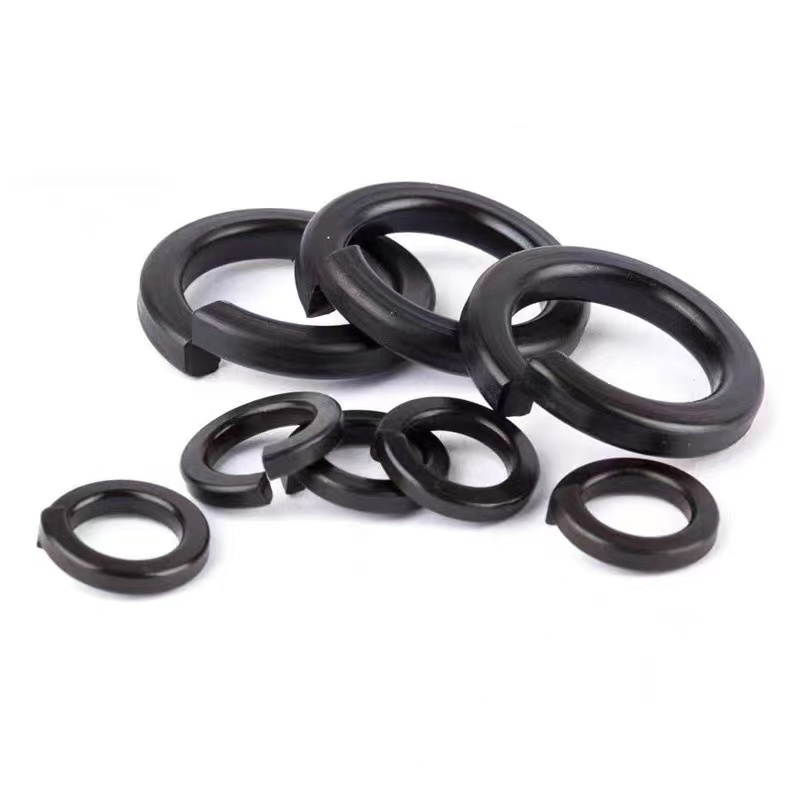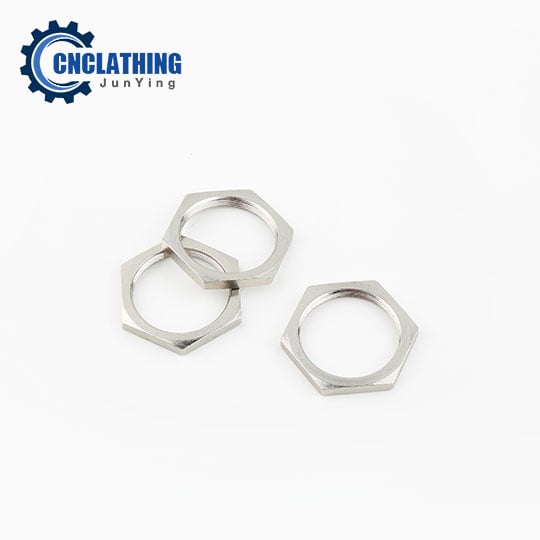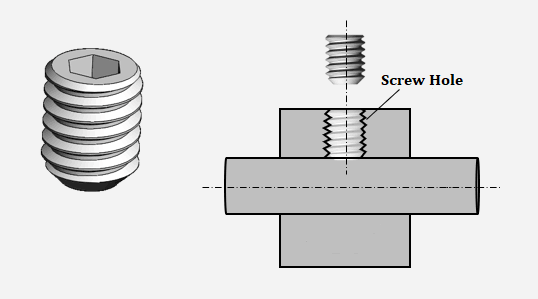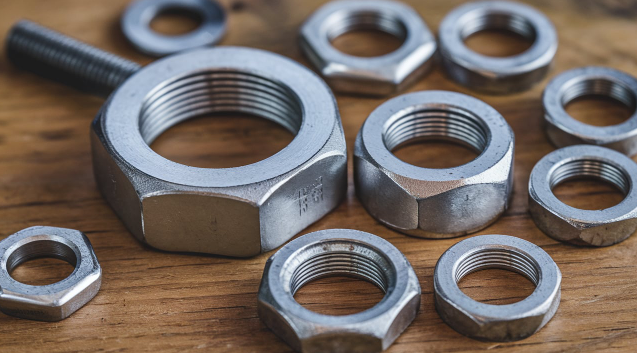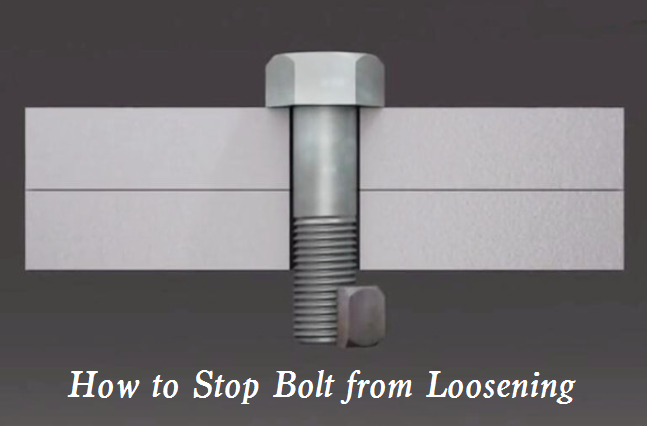Jam nuts are an important component in mechanical fastening, providing a secure way to prevent loosening in applications where vibration or movement occurs. This article provides a detailed look at jam nuts, including their purpose, sizes, torque specifications, and how they compare to other types of nuts.

What is a Jam Nut?
A jam nut, also known as a thin nut, is a type of fastener that is about half the height of a standard finish nut. While the circumference and thread sizes are the same as a standard nut, its reduced height makes it suitable for applications where space is limited. Jam nuts are typically used in conjunction with another nut, serving as a locking mechanism by being tightened against the primary nut to prevent loosening.
Jam nuts are often used in situations where vibration or motion could cause nuts to loosen, and they are available in various types, including hex jam nuts, heavy hex jam nuts, nylon insert jam nuts, and more.
When to Use Jam Nuts?
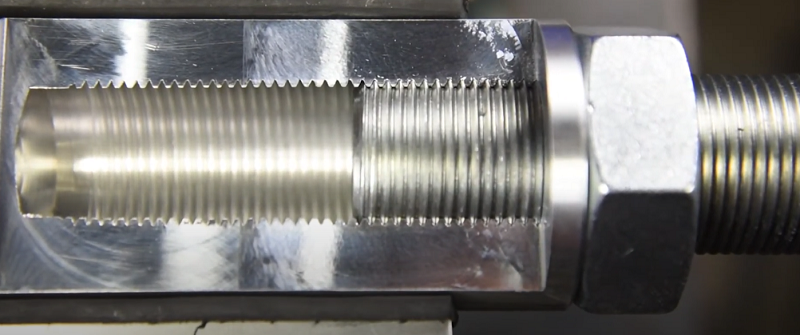
Jam nuts are used in several situations, including:
Vibration-Prone Environments: While jam nuts may loosen in high-vibration environments, they can be used with Loctite or other thread-locking solutions for added security.
Locking Nuts in Place: When two nuts are tightened against each other, the lower nut locks the upper nut in place, preventing it from loosening due to vibration or motion.
Tight Spaces: Their reduced height makes jam nuts ideal for applications where there isn’t enough room for a full-sized nut, such as on alternator brackets or mechanical equipment with limited clearance.
Preventing Damage: Jam nuts can be used to safely remove studs without damaging them, commonly using the double-nut technique.
Adjustable Mechanisms: They are frequently used in applications where a component (e.g., a moving arm or bolt) needs to rotate while still being securely fastened.
With Shoulder Bolts: Jam nuts are often paired with shoulder bolts in mechanical equipment to secure components.
How to Use a Jam Nut?
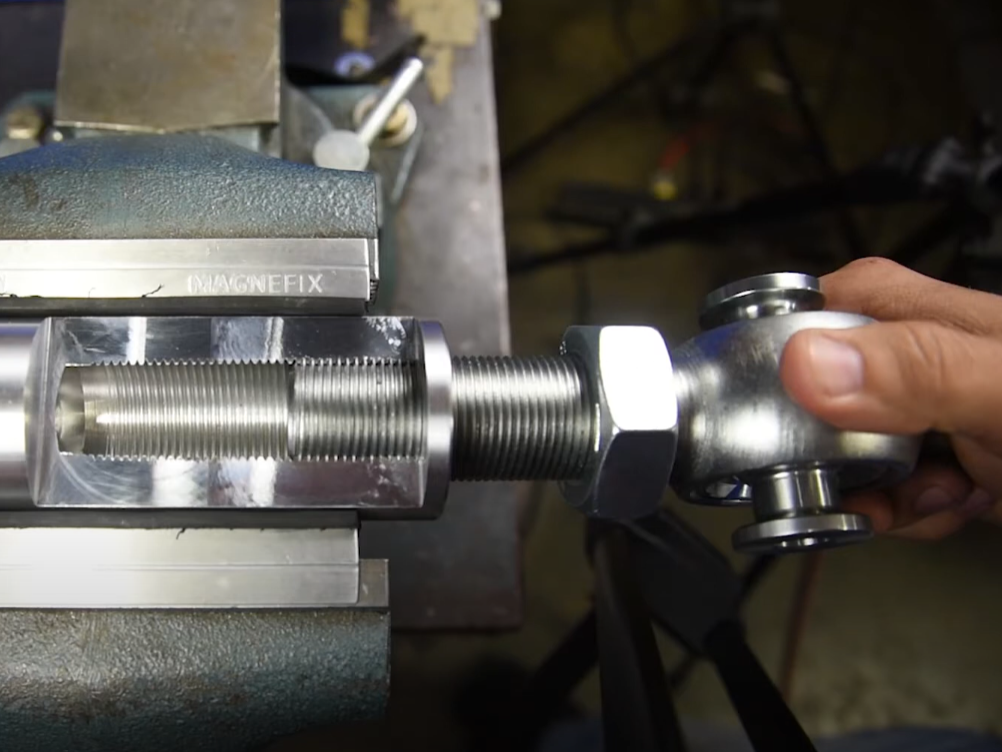
Here’s a step-by-step guide to using a jam nut:
- Thread the Primary Nut:
Install the primary (or bottom) nut onto the bolt or threaded rod. - Thread the Jam Nut:
Thread the jam nut onto the bolt above the primary nut. - Tighten the Nuts Together:
- Use two wrenches: Hold the primary nut in place with one wrench. Tighten the jam nut against the primary nut with a second wrench.
- The two nuts should “jam” together, locking both in place.
- Using the Double-Nut Technique for Stud Removal:
- Tighten the jam nut and primary nut together as described above.
- Use the bottom nut to rotate and safely remove the stud without damaging it.
- After removing the stud, loosen the jam nut by reversing the process.
- Optional Locking Solution:
If used in a high-vibration environment, apply a thread-locking compound (e.g., Loctite) to prevent loosening.
Jam Nut Dimensions (Metric & Inch)
Jam nuts come in a variety of sizes to fit different bolts and threaded fasteners. The size of a jam nut is determined by its nominal diameter and thread pitch, which correspond to the bolt or threaded rod it is used with. These sizes are typically standardized based on specifications such as UNC (Unified Coarse), UNF (Unified Fine), or metric standards.
Common Imperial Jam Nut Sizes (UNC/UNF):
- Diameter: Ranges from small sizes like #4-40 to larger sizes such as 1″-8 or more.
- Thread Pitch: Coarse threads (UNC) – Fewer threads per inch (TPI), e.g., 1/4″-20. Fine threads (UNF) – More threads per inch, e.g., 1/4″-28.
| Diameter (inches) | Thread Pitch (UNC) | Thread Pitch (UNF) |
|---|---|---|
| #4 | 40 TPI | 48 TPI |
| #10 | 24 TPI | 32 TPI |
| 1/4″ | 20 TPI | 28 TPI |
| 3/8″ | 16 TPI | 24 TPI |
| 1/2″ | 13 TPI | 20 TPI |
| 3/4″ | 10 TPI | 16 TPI |
| 1″ | 8 TPI | 12 TPI |
Common Metric Jam Nut Sizes:
- Diameter: Ranges from small sizes like M3 to larger sizes such as M48 or more.
- Thread Pitch:
- Coarse threads: Standard pitch for each diameter, e.g., M10 × 1.5.
- Fine threads: Finer pitch than standard, e.g., M10 × 1.25.
| Diameter (mm) | Coarse Thread Pitch (mm) | Fine Thread Pitch (mm) |
|---|---|---|
| M3 | 0.5 | 0.35 |
| M6 | 1.0 | 0.75 |
| M10 | 1.5 | 1.25 |
| M20 | 2.5 | 2.0 |
| M30 | 3.5 | 3.0 |
| M48 | 5.0 | 4.0 |
Selecting the Correct Jam Nut Size
When choosing a jam nut:
- Match the nominal diameter and thread pitch of the nut to the bolt or threaded rod.
- Ensure the jam nut’s material and strength are compatible with your application (e.g., stainless steel for corrosion resistance, high-strength steel for heavy loads).
Jam Nut Types & Size Charts
There are several types of jam nuts available, each designed for specific applications. Below is a detailed overview of the most commonly used jam nut types:
1. Hex Jam Nut
A six-sided, thin nut used to lock a standard hex nut in place.
- Applications: Commonly used in machinery and automotive applications. Secures bolts in environments with vibration.
- Material Options: Steel, stainless steel, brass, or zinc-plated steel.
- Standards: ANSI/ASME B18.2.2.
- Variants: Coarse thread (UNC) and fine thread (UNF) options.
Imperial Hex Jam Nuts (ANSI/ASME B18.2.2-1987)
| Nominal Diameter (inches) | Width Across Flats (F) | Width Across Corners (G) | Thickness (H) | Thread Pitch (UNC/UNF) |
|---|---|---|---|---|
| 1/4 | 0.438 | 0.505 | 0.163 | 20 / 28 |
| 5/16 | 0.500 | 0.577 | 0.195 | 18 / 24 |
| 3/8 | 0.562 | 0.650 | 0.227 | 16 / 24 |
| 7/16 | 0.688 | 0.794 | 0.260 | 14 / 20 |
| 1/2 | 0.750 | 0.866 | 0.323 | 13 / 20 |
| 9/16 | 0.875 | 1.010 | 0.324 | 12 / 18 |
| 5/8 | 0.938 | 1.083 | 0.387 | 11 / 18 |
| 3/4 | 1.125 | 1.299 | 0.446 | 10 / 16 |
| 7/8 | 1.312 | 1.516 | 0.510 | 9 / 14 |
| 1 | 1.500 | 1.732 | 0.575 | 8 / 12 |
| 1-1/4 | 1.875 | 2.165 | 0.751 | 7 / 12 |
| 1-1/2 | 2.250 | 2.598 | 0.880 | 6 / 12 |
| 1-3/4 | 2.625 | 3.031 | 1.009 | 5 / 8 |
| 2 | 3.000 | 3.464 | 1.138 | 4.5 / 8 |
2. Heavy Hex Jam Nut
Similar to a hex jam nut but with larger dimensions (thicker and wider across flats).
- Applications: Used in heavy-duty applications such as structural steel connections. Provides greater strength for larger bolts or high-load environments.
- Material Options: High-strength steel or stainless steel.
- Standards: ANSI/ASME B18.2.2.
Heavy Hex Jam Nuts (ANSI/ASME B18.2.2-1987)
| Nominal Diameter (inches) | Width Across Flats (F) | Width Across Corners (G) | Thickness (H) | Weight (lbs/100 pcs) |
|---|---|---|---|---|
| 1/4 | 0.500 | 0.488 | 0.188 | 4.000 |
| 5/16 | 0.562 | 0.546 | 0.220 | 6.960 |
| 3/8 | 0.688 | 0.669 | 0.252 | 11.000 |
| 7/16 | 0.750 | 0.728 | 0.285 | 16.700 |
| 1/2 | 0.875 | 0.850 | 0.371 | 23.500 |
| 5/8 | 1.062 | 1.031 | 0.381 | 36.300 |
| 3/4 | 1.250 | 1.212 | 0.446 | 51.500 |
| 1 | 1.625 | 1.575 | 0.575 | 78.600 |
| 1-1/4 | 2.000 | 1.938 | 0.751 | 102.000 |
| 1-1/2 | 2.375 | 2.300 | 0.880 | 131.000 |
Metric Hex Jam Nuts (ISO 4035 / DIN 439)
| Nominal Diameter (mm) | Thread Pitch (mm) | Width Across Flats (A) | Width Across Corners (B) | Thickness (H) |
|---|---|---|---|---|
| M3 | 0.5 | 5.5 mm | 6.01 mm | 1.8 mm |
| M4 | 0.7 | 7.0 mm | 7.67 mm | 2.2 mm |
| M5 | 0.8 | 8.0 mm | 8.79 mm | 2.7 mm |
| M6 | 1.0 / 0.75 | 10.0 mm | 11.05 mm | 3.2 mm |
| M8 | 1.25 / 1.0 | 13.0 mm | 14.38 mm | 4.0 mm |
| M10 | 1.5 / 1.25 | 16.0 mm | 17.77 mm | 5.0 mm |
| M12 | 1.75 / 1.5 | 18.0 mm | 20.03 mm | 6.0 mm |
| M16 | 2.0 / 1.5 | 24.0 mm | 26.75 mm | 8.0 mm |
| M20 | 2.5 / 2.0 | 30.0 mm | 33.53 mm | 10.0 mm |
| M24 | 3.0 / 2.0 | 36.0 mm | 40.38 mm | 12.0 mm |
| M30 | 3.5 / 2.0 | 46.0 mm | 51.18 mm | 15.0 mm |
3. Nylon Insert Jam Nut
A jam nut with a nylon ring at the top that creates friction with the bolt threads to prevent loosening.
- Applications: Used where vibration is frequent, such as in engines or heavy machinery. Provides self-locking properties without requiring an additional nut.
- Material Options: Steel, stainless steel, or zinc-plated steel with a nylon insert.
Nylon Insert Jam Nut Size Chart
| Nominal Diameter (inches) | Thread Pitch (TPI) | Width Across Flats (F) | Thickness (H) | Nylon Insert Depth (N) | Weight (lbs/100 pcs) |
|---|---|---|---|---|---|
| 1/4 | 20 / 28 | 0.438 | 0.22 | 0.10 | 2.620 |
| 5/16 | 18 / 24 | 0.500 | 0.27 | 0.12 | 4.930 |
| 3/8 | 16 / 24 | 0.562 | 0.34 | 0.14 | 7.700 |
| 1/2 | 13 / 20 | 0.750 | 0.45 | 0.20 | 17.200 |
| 3/4 | 10 / 16 | 1.125 | 0.68 | 0.30 | 36.100 |
4. Thin Jam Nut (Low Profile)
A thinner, low-profile version of the standard hex jam nut.
- Applications: Used in confined spaces where a standard nut or washer cannot fit. Common in electronic assemblies and small machinery.
- Material Options: Steel, stainless steel, aluminum.
| Nominal Diameter (inches) | Thread Pitch (TPI) | Wing Span (F) | Height (H) | Weight (lbs/100 pcs) |
|---|---|---|---|---|
| 1/4 | 20 | 18 mm | 6 mm | 2.600 |
| 3/8 | 16 | 20 mm | 8 mm | 6.500 |
| 1/2 | 13 | 25 mm | 10 mm | 12.000 |
5. Round Jam Nut
A round nut with no edges, often designed for aesthetic purposes or specific applications.
- Applications: Used in furniture or decorative fixtures. Often paired with threaded rods for clean, polished finishes.
- Material Options: Polished brass, stainless steel, or aluminum.
6. Slotted Jam Nut (Castle Jam Nut)
A jam nut with slots cut into its top surface, allowing it to be secured with a cotter pin.
- Applications: Used in automotive axles, steering systems, and other critical applications where locking is essential.
- Material Options: Steel, stainless steel.
- Standards: SAE J995 or similar.
| Nominal Diameter (inches) | Thread Pitch (TPI) | Width Across Flats (F) | Thickness (H) | Slot Depth (S) | Slot Width (W) |
|---|---|---|---|---|---|
| 1/4 | 20 | 0.438 | 0.22 | 0.05 | 0.10 |
| 3/8 | 16 | 0.562 | 0.34 | 0.08 | 0.12 |
| 1/2 | 13 | 0.750 | 0.45 | 0.10 | 0.15 |
7. Coupling Nut (Extended Jam Nut)
A long nut designed to connect two threaded rods or bolts.
- Applications: Used in construction, scaffolding, or mechanical assemblies that require extended fastening.
- Material Options: Steel, stainless steel, or zinc-plated steel.
- Standards: DIN 6334.
| Nominal Diameter (inches) | Thread Pitch (TPI) | Length (L) | Width Across Flats (F) | Weight (lbs/100 pcs) |
|---|---|---|---|---|
| 1/4 | 20 | 1.000 | 0.500 | 4.200 |
| 3/8 | 16 | 1.500 | 0.750 | 9.500 |
| 1/2 | 13 | 2.000 | 0.875 | 21.000 |
8. Serrated Jam Nut
A jam nut with serrated edges or grooves to increase friction and resist loosening.
- Applications: Ideal for high-vibration environments such as heavy machinery or automotive components.
- Material Options: Steel with zinc or black oxide coating.
| Nominal Diameter (inches) | Thread Pitch (TPI) | Width Across Flats (F) | Thickness (H) | Nylon Insert Depth (N) | Weight (lbs/100 pcs) |
|---|---|---|---|---|---|
| 1/4 | 20 / 28 | 0.438 | 0.22 | 0.10 | 2.620 |
| 5/16 | 18 / 24 | 0.500 | 0.27 | 0.12 | 4.930 |
| 3/8 | 16 / 24 | 0.562 | 0.34 | 0.14 | 7.700 |
| 1/2 | 13 / 20 | 0.750 | 0.45 | 0.20 | 17.200 |
| 3/4 | 10 / 16 | 1.125 | 0.68 | 0.30 | 36.100 |
Jam Nut Torque Chart
The torque required for tightening a jam nut depends on the bolt size and material. Below is a general torque chart for jam nuts, assuming they are installed on standard bolts with Unified National Coarse (UNC) or Unified National Fine (UNF) threads. Always consult the manufacturer’s specifications for specific torque recommendations.
Standard Jam Nut Torque Chart for Steel Nuts
| Nominal Bolt Size (inches) | Thread Pitch (TPI) | Recommended Torque (ft-lbs) | Recommended Torque (Nm) |
|---|---|---|---|
| 1/4 | 20 / 28 | 6–8 | 8–11 |
| 5/16 | 18 / 24 | 12–14 | 16–19 |
| 3/8 | 16 / 24 | 20–25 | 27–34 |
| 7/16 | 14 / 20 | 30–40 | 41–54 |
| 1/2 | 13 / 20 | 50–70 | 68–95 |
| 9/16 | 12 / 18 | 70–100 | 95–135 |
| 5/8 | 11 / 18 | 90–120 | 122–162 |
| 3/4 | 10 / 16 | 150–250 | 203–338 |
| 7/8 | 9 / 14 | 250–350 | 338–474 |
| 1 | 8 / 12 | 350–450 | 474–610 |
Heavy Hex Jam Nut Torque Chart for Steel Nuts
| Nominal Bolt Size (inches) | Thread Pitch (TPI) | Recommended Torque (ft-lbs) | Recommended Torque (Nm) |
|---|---|---|---|
| 1/4 | 20 / 28 | 8–10 | 11–14 |
| 5/16 | 18 / 24 | 15–20 | 20–27 |
| 3/8 | 16 / 24 | 25–35 | 34–47 |
| 7/16 | 14 / 20 | 40–50 | 54–68 |
| 1/2 | 13 / 20 | 60–80 | 81–108 |
| 5/8 | 11 / 18 | 110–140 | 149–190 |
| 3/4 | 10 / 16 | 180–300 | 244–406 |
| 7/8 | 9 / 14 | 280–400 | 379–542 |
| 1 | 8 / 12 | 400–600 | 542–813 |
Jam Nut Torque Chart for Stainless Steel Nuts
Stainless steel jam nuts are often used in corrosion-resistant environments. The torque values for these are slightly lower to prevent galling (thread seizure).
| Nominal Bolt Size (inches) | Thread Pitch (TPI) | Recommended Torque (ft-lbs) | Recommended Torque (Nm) |
|---|---|---|---|
| 1/4 | 20 / 28 | 5–7 | 7–10 |
| 5/16 | 18 / 24 | 10–12 | 14–16 |
| 3/8 | 16 / 24 | 15–20 | 20–27 |
| 7/16 | 14 / 20 | 25–35 | 34–47 |
| 1/2 | 13 / 20 | 40–55 | 54–75 |
| 5/8 | 11 / 18 | 60–90 | 81–122 |
| 3/4 | 10 / 16 | 100–150 | 135–203 |
Jam Nut Torque Chart for Nylon Insert Jam Nuts
Nylon insert jam nuts require less torque than standard steel jam nuts because the nylon insert provides resistance.
| Nominal Bolt Size (inches) | Thread Pitch (TPI) | Recommended Torque (ft-lbs) | Recommended Torque (Nm) |
|---|---|---|---|
| 1/4 | 20 / 28 | 3–5 | 4–7 |
| 5/16 | 18 / 24 | 7–10 | 10–14 |
| 3/8 | 16 / 24 | 15–20 | 20–27 |
| 1/2 | 13 / 20 | 25–40 | 34–54 |
| 5/8 | 11 / 18 | 50–80 | 68–108 |
Factors Affecting Torque Values
The above torque chart is only for reference under normal circumstances. The torque value may sometimes be affected by some factors. Stainless steel, brass, and aluminum nuts may require lower torque values compared to carbon steel nuts. If threads are lubricated (e.g., with anti-seize or Loctite), reduce torque values by approximately 25%. Clean and undamaged threads ensure proper torque application. Rusty or dirty threads may require higher torque. Some applications, such as high-vibration environments, may require additional locking mechanisms like thread lockers.
Jam Nut vs. Lock Nut vs. Hex Nut, What are the Differences?
When choosing between jam nuts, lock nuts, and hex nuts, it’s important to consider their design, function, installation, and overall performance. Each type serves a different purpose, making them suited for particular applications. Below is a comparison of these three types of nuts.
1. Definition
- Hex Nut: A standard six-sided nut with internal threading that secures a bolt or threaded rod. It is the most commonly used nut in fastening applications.
- Jam Nut: A thinner version of a hex nut, specifically designed to be used together with another nut to lock it in place. It prevents loosening by being tightened against a primary nut.
- Lock Nut: A nut designed with built-in locking features—such as nylon inserts, deformed metal threads, or serrated edges—to resist loosening due to vibration. Unlike jam nuts, lock nuts do not require a second nut to function.
2. Design
- Hex Nuts: Standard six-sided nuts with internal threading. They are thicker than jam nuts and are designed to be used directly on bolts.
- Jam Nuts: Also hexagonal but thinner than standard hex nuts. They are meant to be used alongside a standard hex nut to secure fasteners.
- Lock Nuts: Can have a hexagonal shape but come with features like nylon inserts or deformed metal threads that help prevent loosening.
3. Function
- Hex Nuts: Act as the primary fastening component, securing bolts in place by threading onto them.
- Jam Nuts: Work in combination with a standard hex nut to prevent loosening due to vibration. They “jam” against the primary nut to hold it in place.
- Lock Nuts: Feature built-in locking mechanisms that resist loosening under vibration or load without needing a second nut.
4. Installation and Removal
- Hex Nuts: Simple to install and remove using standard tools like wrenches or sockets.
- Jam Nuts: Require a two-wrench method—one wrench holds the primary nut while the other tightens the jam nut against it.
- Lock Nuts: Some types (like nylon insert lock nuts) require additional torque to engage the locking feature, making removal more difficult.
5. Applications
- Hex Nuts: Used in a wide range of applications, including construction, machinery, and general fastening.
- Jam Nuts: Commonly found in high-vibration environments such as automotive and mechanical applications where extra security is needed.
- Lock Nuts: Frequently used in aerospace, automotive, and industrial settings where vibration or movement may cause standard nuts to loosen.
6. Load Capacity
- Hex Nuts: Load capacity depends on material and grade, suitable for a wide range of applications.
- Jam Nuts: Do not carry the primary load but enhance joint security when paired with hex nuts.
- Lock Nuts: Withstand dynamic loads and vibrations, maintaining grip under stress.
7. Cost
- Hex Nuts: Generally the most affordable option, as they are widely produced and used.
- Jam Nuts: Usually cost-effective, but their price depends on material and thickness.
- Lock Nuts: Often more expensive due to their specialized locking features. Nylon insert lock nuts tend to be more affordable than all-metal lock nuts.
8. Material Options
- Hex Nuts: Available in carbon steel, stainless steel, brass, and other materials for different environments.
- Jam Nuts: Made from similar materials as hex nuts, though their thinner profile may limit some options.
- Lock Nuts: Available in multiple materials, with some designed specifically for high-temperature or corrosive environments.
9. Performance in High-Temperature Environments
- Hex Nuts: Performance varies based on material; some may not withstand extreme heat.
- Jam Nuts: Can perform well in high-temperature environments if made from heat-resistant materials.
- Lock Nuts: All-metal lock nuts are best for high-temperature applications, as they maintain their locking ability without melting or deforming.
10. Grading and Standards
- Hex Nuts: Typically graded for strength and durability, making them suitable for structural applications.
- Jam Nuts: Not usually graded as structural fasteners; primarily used for locking purposes.
- Lock Nuts: Grading depends on the locking mechanism but is usually focused on locking capabilities.
Jam Nut vs. Lock Nut vs. Hex Nut: Which One Should You Use?
- Use a hex nut if you need a standard fastening solution with no special locking requirements.
- Use a jam nut when securing a primary nut in high-vibration applications or when fine adjustments are needed.
- Use a lock nut if you need a self-locking fastener that resists loosening without requiring a second nut.


